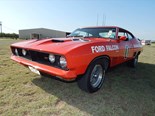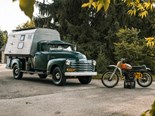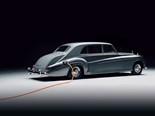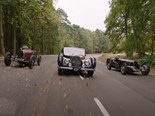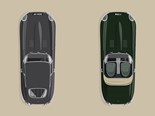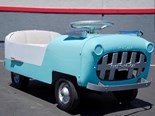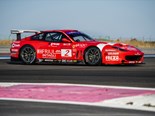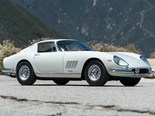Mazda Bongo production ends after 54 years













|

|

|

|

|

|
End of the line for Mazda’s game-changing Bongo van
Like us, you may be surprised to learn that the Mazda Bongo was still being produced by Mazda in Japan up until last month!
But it seems to be the end of the line, for the enduring one-box van.
READ NEXT: 1976 MAZDA BONGO - READER RIDE
That may not be big news for Australian readers; in fact, our roads were once littered with the things. Tasked with hauling any number of goods and tools for the everyday man; most would remember them as mere tools.
As a pioneer of the private commerical car, however, the Bongo was quite the innovator.

Launched domestically in Japan in 1966, the Mazda Bongo offered a utilitarian one-box design unlike anything before. Sure, Japanese one-box commercial vans existed before, but they often belonged to a much smaller class like the Subaru Sambar. The Bongo was a proper mid-sized van that preceded more ubiquitous nameplates like the Toyota TownAce or Mitsubishi Delica that would eventually dominate the segment.
READ NEXT: 1950 MORRIS J-TYPE VAN - READER RESTO
It was rather advanced for the 60s too: featuring a rear-mounted engine which drove the rear wheels, and independent suspension at all four corners. Its rear-engined nature gave the Bongo its distinctive friendly-face, which was free of grilles and made even more personable with the optional two-tone paintjob.
The first-generation Bongo was an instant best-seller although was discontinued in March 1975 amidst the global oil crisis. The Bongo was relaunched as an all-new second-generation platform in September 1977.

In 1979, Ford purchased a stake in Mazda and would go on to sell the Bongo locally as a rebadged Ford Econovan, Econowagon and Spectron.
READ NEXT: IS THIS AUSTRALIA'S BEST MAZDA COLLECTION?
The third-generation debuted in 1983, and was sold in Australia as the Mazda E-series, Mazda Traveller, Ford Econovan and Ford Spectron. An enduring model, this generation of van endured a 17-year lifecycle; and illustrated a shift towards more passenger and comfort-focused buyer trends, with cloth trim interiors, oh-so-80s graphics and 4WD options.

In the 90s, Nissan also began selling Bongos as rebadged Vannettes as part of a partnership that would continue into the 2000s.
Amidst a less-than favourable financial position for Mazda, the fourth-generation Bongo was actually a facelift instead of an all-new platform.
Yet despite its age, was still sold as a Mitsubishi Delica in markets around the world.
Earlier this year, Mazda announced that its own Bongo production would end in August. The nameplate will live on however, due to Mazda and Toyota’s capital alliance of 2017, will continue on as a rebadged Daihatsu GranMax built in Indonesia.
A somewhat ironic, and ignominious end for a model that formed the basis for so many other badge-engineered variants all across the globe.
Classic Australian Family Car Value Guide home page
Muscle Car Value Guide home page
Japanese Classic Car Value Guide home page
Unique Cars magazine Value Guides
Sell your car for free right here
Get your monthly fix of news, reviews and stories on the greatest cars and minds in the automotive world.
Subscribe

.jpg)







.jpeg)




